- Administrator
- Albums and Singles
 This third album from J.R. Robinson’s shifting ensemble is primarily based upon the life and work of Carlo Gesualdo, a radical and visionary early composer of sacred music who is much more famous for murdering and mutilating his wife and her lover.  A second and shorter piece is additionally included that draws inspiration from the brutal prison death of Boston priest and prolific pedophile Father John Geoghan.  Both thematically linked stories are certainly fertile ground for a very wild and disturbing album, but Night of Your Ascension unexpectedly falls a bit short of Robinson’s previous albums.  There are certainly still plenty of highlights, but Robinson seems to be in a bit of a rut, repeating his previously successful formula with increased predictability and diminished returns.
This third album from J.R. Robinson’s shifting ensemble is primarily based upon the life and work of Carlo Gesualdo, a radical and visionary early composer of sacred music who is much more famous for murdering and mutilating his wife and her lover.  A second and shorter piece is additionally included that draws inspiration from the brutal prison death of Boston priest and prolific pedophile Father John Geoghan.  Both thematically linked stories are certainly fertile ground for a very wild and disturbing album, but Night of Your Ascension unexpectedly falls a bit short of Robinson’s previous albums.  There are certainly still plenty of highlights, but Robinson seems to be in a bit of a rut, repeating his previously successful formula with increased predictability and diminished returns.
In classic Robinson fashion, Night of Your Ascension again enlists an improbable line-up of Chicago underground music luminaries from several different scenes.  There are also a couple of inspired surprises welcomed into the fold, such as Marissa Nadler and Einstürzende Neubauten's Alexander Hacke.  Still another surprise is that the album’s title piece is ostensibly a loose reworking of one of Gesualdo's madrigals ("Ahi Dispietata e Cruda").  That seems like quite a quixotic undertaking, as Robinson chose that piece for its microtonal properties, which seem like they would be hopelessly lost amidst the full-on extreme metal bombast that "Night of Your Ascension" gradually becomes.  At first, however, that choice definitely makes a lot of sense, as the opening third of the piece is a timelessly beautiful reverie of Nadler’s ghostly vocals, eerily dissonant church organ (or harmonium), and Mary Lattimore’s celestial harp.
Gradually, the heavenly opening movement segues into still more neo-classicism, as Nadler and the organ are displaced by a melancholy string ensemble, then a remarkably convincing sacred chorus of female voices. The choral interlude is short-lived, however, as "Night" soon erupts into a predictable doom metal transformation around the halfway point.  Granted, I am not much of a metal fan, but I am hard-pressed to understand why Robinson thought this was a good idea.  There just is not much happening: a glacial drum beat and a simple, heavily distorted chord progression.  Then it explodes into a sudden, unearned crescendo of crash cymbals and unintelligible, heavily reverbed male chants and moans.  I suppose it all works as a show of force, as it is certainly loud and there are some cool drum fills, but it all seems arbitrary and meaningless to me.  As does the next crescendo, which throws some distorted black metal howling into the mix–plenty of fury, minimal content.  Admittedly, there are some neat things happening in the periphery at times, but the second half of "Night" basically sounds like a competent metal band with too many members and too few ideas, which is very disappointing from a mind like Robinson's and this pool of talent.
"Run Priest Run" is about half as long and lacks anything quite as striking and wonderful as the opening movement of "Night," but it somehow works a lot better as a whole.  For one, it is considerably less heavy-handed and considerably more unusual, as the metal elements are not the focus.  In fact, they are heard through a rhythmic wash of static and my attention is consumed mostly by the piece’s drifting, hallucinatory, and angelic vocals.  Eventually, the female vocals are replaced by howling and distorted male vocals from The Body's Chip King, but this time the transition works much better, as Wrekmeister’s lumbering doom metal is increasingly embellished with roiling electronic chaos.  Unlike "Night," which clumsily transitions from motif to another, "Run Priest Run" is just a long steady build and is all the better for it.
Assuming that Robinson’s deep love of metal is not going anywhere, "Run Priest Run" seems to be the way forward for Wrekmeister Harmonies, as it uses metal drumming and heavily distorted guitars to add heft to themes that are much more unusual and abstract rather than as an end unto itself.  That is dramatically more effective than basically just flipping an "ok, we’re a metal band now" switch midway through a song.  Also, a lot of the appeal of metal lies in its songcraft and riffage, neither of which Wrekmeister offers–and even if they did, there is no shortage of other bands already doing that quite well.  The world does not need one more middle-of-the-road metal band, particularly from someone who is demonstrably much more adept at making drone music or channeling Arvo Pärt.  I appreciate Wrekmeister Harmonies for their dissimilarity to other bands, not for their ability to play power chords.  It is the abstract, inventive, and artistic aspects of this project alone that appeal to me, but Wrekmeister's dubious desire to rock is at odds with that on "Night."  Hopefully, Robinson will soon find a better way to balance those two sides of his vision ("Priest" is certainly a good start).  All grumbling aside, however, at least half of Night of Your Ascension is quite good, so it is not a complete misstep or disappointment by any means.  It is, unfortunately, the weakest of Wrekmeister's three albums to date though.
 
Read More
- Administrator
- Albums and Singles
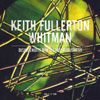 Just as good, if not better than, his Kranky output, Keith Fullerton Whitman's latest full-length is a prismatic burst of field recordings, tape manipulation, and synth wrangling via Pierre Henry and Kraftwerk. Disappearing behind elaborate electronic processes, Keith gives in to chance and lets his machines churn out two side-long pieces of frequency manipulation, helicopter rhythms, runaway melodies, and plenty of noise. Few things released last year are as thrilling as side two is: the five years Keith put into hatching it definitely paid off.
Just as good, if not better than, his Kranky output, Keith Fullerton Whitman's latest full-length is a prismatic burst of field recordings, tape manipulation, and synth wrangling via Pierre Henry and Kraftwerk. Disappearing behind elaborate electronic processes, Keith gives in to chance and lets his machines churn out two side-long pieces of frequency manipulation, helicopter rhythms, runaway melodies, and plenty of noise. Few things released last year are as thrilling as side two is: the five years Keith put into hatching it definitely paid off.
Keith's description of this record at Mimaroglu reads like a technical manual for aspiring composers, but it serves as an excellent introduction to the music. Utilizing a Nagra mono tape recorder, contact mics, modular synth, his own live recordings, and other varied gadgets and processes about which I know very little, Whitman pieces together a coherent half-hour of haphazard, absolutely electric audio in tribute to his favorite aleatoric and automatic sounds.
Anyone who has been to his live shows in the last couple of years will be familiar with Keith's modus operandi, at least in part. Nearly all of the first side's frequency burps, echoes, low-end rumbles, and reverberated voices are improvised into existence, not composed. Sounds happen, but they've been tied together in a knot. For a little while, the music is the sound of that knot coming undone. Voices, cars, street noise, metallic crashes, and a symphony of other vibrations collide with one another in accidental fashion until, around half-way through, the sensory overload gives way to patterns. Whether by accident or by design, clusters of acoustically-related noise are stretched and warped into a series of busy crescendos, each of which concludes with a sudden dynamic shift. These shifts are typically from loud to quiet, or from manic to calm, and they help mark out each of the piece's varied passages. The effect is sometimes comedic, like someone burping after a homily, and sometimes jarring, like a car wreck that wasn't seen coming. Either way, passive listening is discouraged, because the little details are as important as the big, structural ones. Things are shaken up as synthesizer tones are slowly introduced and Whitman segues from musique concrète to mutant concrète.
The album's second half features a steady mechanical rhythm, blasts of broken chords, and an assortment of noises that serve to compliment both. In one way it is the opposite of the first side's seemingly chaotic movements: there are melodies, a steady pulse, and forward movement, which creates a sense of imposed structure, illusory or otherwise. In another way it is the synthetic companion to side one: it continues a theme established on the first side, the melodies are as irregular and broken as the tape sounds are, rhythms converge only to deviate, and I have yet to discover any kind of purposeful structure in the proceedings, aside from the infectious pulse. "Disingenuousness" unfolds as if by chance. Listening to it is like watching an impossibly complex, naturally occurring Rube Goldberg machine unfold spontaneously in time: someone must have made such a thing possible in advance, but discovering that someone in the machine itself is almost impossible.
Only 500 copies of Disingenuity/Disingenuousness were made. When it sells out, I hope a second edition will be pressed. This is easily one of Keith's best works, and it deserves a much larger audience. Of course, I doubt the second edition will have such beautiful packaging. Pan obviously went to great lengths assembling this LP: the heavy vinyl and and silk-screened jacket definitely contribute to the record and make it feel extra substantial.
samples:
 
Read More
- Administrator
- Albums and Singles
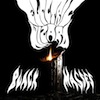 For their seventh full length, the Wizard have opted for a more hard rock focussed style. Scummy biker riffs are pushed to the front; the pummelling smoked doom is still present but has become less overt. Overall, I am not sure if the shift has truly paid off but I cannot deny that this is still a decent album once I allowed myself to become totally immersed in it.
For their seventh full length, the Wizard have opted for a more hard rock focussed style. Scummy biker riffs are pushed to the front; the pummelling smoked doom is still present but has become less overt. Overall, I am not sure if the shift has truly paid off but I cannot deny that this is still a decent album once I allowed myself to become totally immersed in it.
With Witchcult Today and their side of the split with Reverend Bizarre, I was beginning to think that Electric Wizard were in danger of becoming the most unholy, heavy and brilliant metal band on the planet. Their earlier albums are unimpeachable but Witchcult Today represented a perfect musical alchemy; their mix of sleaze, occult references, drugs, metal, and '70s heavy rock coming together in a fantastic orgy of obliterating sound. Therefore, my first time listening to Black Masses was with high expectations and at first I must admit I was underwhelmed. What always had impressed me about Electric Wizard was how full the band sounded and something about this album felt flat to me. The drums and the bass, particularly on the opener "Black Mass," did not have the same oomph as before and Jus Oborn’s guitar tone has undergone a change. However, after a few play-throughs of the album, it began to cast its evil spell over me.
Evil is definitely the most apt word to describe Black Masses, Oborn’s lyrics drip with the kind of imagery that should be hokey and cringe worthy in any other setting but comes alive with horror with Oborn’s singing and the backing of the rest of the band. "Venus in Furs" (not a Velvets cover but a reference to the film of the same name) comes closest to the classic Electric Wizard formula but has a killer sing-along chorus that lifts the music to a new level. The buzzing, psychedelic guitar solo that rips out of the song is the final element I needed to hear to decide that yes this is a great album and my only real problem with it is that I expected something else from the group.
The album does tread water a little but it changes with each listen as to which songs I feel are sub-par, suggesting that it might be just my moods that are off. However, there is not a huge amount of variety here aside from the monster, space-time continuum crushing closer "Crypt of Drugula" which completely departs from the rest of Black Masses. A lot of the other songs are interchangeable; songs like "Patterns of Evil" do not do a whole lot more than fill out the disc. Elsewhere, songs like "Satyr IX" and "Turn Off Your Mind" do a much better job of conjuring up the kind of vibes I feel the band are reaching for throughout the album. "Turn Off Your Mind" will easily be regarded as classic Wizard with its perfect blend of rotten psychedelia and phenomenal riffing.
Black Masses may not be Electric Wizard’s best effort but it certainly does not do them an injustice. It may well represent a transitional period for the group and I am interested to hear how the songs sound live and what might come next. In the meantime, I plan to give Black Masses more of my time as Electric Wizard always improve with more exposure.
samples:
 
Read More
- Administrator
- Albums and Singles
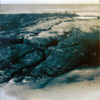 I haven't been paying too much attention to Acid Mothers Temple for quite some time, as their formula of tripped-out, burbling maximalism started to yield rapidly diminishing returns for me after a few albums.  Still, I often find Kawabata's periodic departures from his core sound to be pretty enjoyable and this is one such case: a pair of hypnotically repetitive and largely acoustic solo pieces.  It is always enticing to hear what Makoto can do when he is not rocking out beneath an electronic maelstrom of bloops and whooshes.
I haven't been paying too much attention to Acid Mothers Temple for quite some time, as their formula of tripped-out, burbling maximalism started to yield rapidly diminishing returns for me after a few albums.  Still, I often find Kawabata's periodic departures from his core sound to be pretty enjoyable and this is one such case: a pair of hypnotically repetitive and largely acoustic solo pieces.  It is always enticing to hear what Makoto can do when he is not rocking out beneath an electronic maelstrom of bloops and whooshes.
The first half of this album is devoted to its 20-minute title piece, which is based upon an unexpectedly languid and melodic finger-picked acoustic guitar loop.  As it lazily unfolds, something that sounds like a distant and forlorn-sounding French horn emerges to weave a sad and simple melody while a number of other distant moans and whines begin to drift in and out to provide color and passing harmonies.  Shortly after the 7-minute mark, Kawabata steps in to accompany the lonely moans with his own wordless vocals, but soon launches unexpectedly into a half-sung/half-chanted actual verse (aided by a heavy dose of reverb).  At some point during his vocals, the underlying guitar part is surreptitiously (and seamlessly) reversed and a sitar-like buzz becomes more prominent, which is a pretty neat trick.  Soon after, Kawabata's vocals cohere into a lazily repeating refrain of sorts, which he artfully doubles with some sarangi to make it sound like he is being accompanied by a delayed and higher-pitched second vocalist.  The sarangi doppelganger gradually subsumes Makota’s own voice and lulls the song to a fading close.  It's ultimately a likable piece, but it hard to put my finger on exactly why it works, as it is rather amorphous and Kawabata's brief singing interlude seems both anomalous and puzzling.  Even so, it manages to be sleepily mesmerizing and the interplay between the various elements is inventive and well-arranged.  It certainly feels somewhat sketch-like, but the sketch is a promising one.
The second side consists solely of the similarly epic "The Looking Glass Love," which begins with a tense and endlessly repeating acoustic guitar loop and essentially sticks with that as the backbone of the song for its entire duration.  It's a gambit that works quite well, as the endless looping guitar quickly sucks me into the song's pulse and provides a solid foundation for whatever Kawabata feels like throwing at me for the next 20 minutes, which in this case sounds a lot like an darker, unplugged version of AMT's signature spaced-out mindfuckery.  Well, not entirely unplugged, as there is some unrecognizably processed electric guitar involved, but Makoto also employs an eclectic array of other instruments ranging from hurdy-gurdy to tambura.  He seems especially fond of creating buzzing discordant harmonies between multiple droning notes, which nicely enhances the already ample tension and evokes a palpable sense of dread as well. Gradually, the drones threaten to steal the foreground from the guitars and drag the piece towards something that resembles a submerged and warped bagpipe ensemble, but they never quite succeed.  The endless tug-of-war between the song's central guitar motif and the queasy droning and late-song electronic burbling keeps things pretty compelling and makes for a somewhat nerve-jangling but satisfying composition.  Of the two pieces, it is by far my favorite, largely due to its unsettling edge and more engaging pace and structure.
White Summer of Love Dreamer is a pretty likable and unusual release for Makoto, but it is also a somewhat minor one.  However, the album art is quite stunning (a photograph of a particularly desolate and rocky stretch of beach) and fits the music perfectly, so I am happy to keep this around despite its mixed success.  I would love to hear some more work in this vein, but it ishopeless to try to anticipate what Kawabata will do next: this could be a stage in an evolution towards a fruitful organic and drone-informed future or merely a temporary digression.  I guess I’ll just have to wait and see.
 
Read More
- Administrator
- Albums and Singles
 This unique husband-and-wife duo only existed for a few short years, but during that tragically brief window, they managed to record and release such a staggering avalanche of material that even Masami Akita might raise an eyebrow at their tireless pace.  As such, navigating their sprawling discography of mostly limited edition releases is a daunting and complicated task, particularly since the difference between great minimal drone and not-so-great minimal drone is very blurry and difficult to articulate.  Thankfully, this (one of their rare few vinyl releases) provides an excellent starting point.
This unique husband-and-wife duo only existed for a few short years, but during that tragically brief window, they managed to record and release such a staggering avalanche of material that even Masami Akita might raise an eyebrow at their tireless pace.  As such, navigating their sprawling discography of mostly limited edition releases is a daunting and complicated task, particularly since the difference between great minimal drone and not-so-great minimal drone is very blurry and difficult to articulate.  Thankfully, this (one of their rare few vinyl releases) provides an excellent starting point.
The works here were culled from recordings made by Will Long and Dani Baquet-Long over an 18-month period ending in July 2008, about a year before Dani unexpectedly died from heart failure.Althoughpresumably absent from the mixing and assembling of the finished album, Baquet-Long's presence remains quite prominent, as she posthumously provides many of the album's most vibrant elements through her field recordings from Nepal and her perversely festive cover art. Also, of course, she is responsible for a lot of the music, though it is nearly impossible to tell which instruments are being played at any given time (or by whom), as the Celer sound is heavily blurred and processed.  Their closest stylistic kin is probably Disintegration Loops-era William Basinski, as both artists have a propensity for repetition, haziness, and slow-motion drifting, but there are some considerable differences as well.
In characteristic Celer fashion, each side of this release is essentially comprised of just one lengthy piece, but given multiple titled sections that are quite difficult to isolate. The music itself is essentially drone in the most "drone" sense possible, as the pair employ their arsenal of pipe organs, strings, and tapes to create a vaporously shifting bed for a host of swelling and shimmering other indistinct sounds to emerge from and disappear back into.  Such an aesthetic has the potential to be a bit on the dull side, but Celer wisely intersperse their narcotic reveries with untreated field recordings of boisterous crowds from Dani's stay in Kathmandu (as well as a particularly poignant old movie snippet).  The overall effect is like being in an alternately warm and eerily desolate dream, but sometimes drifting back into semi-consciousness to find a somewhat unfamiliar world.  It can be a bit disquieting and sad, but it can also be quite absorbing.
While some of this material was recorded as much as four years ago and has mysteriously avoided being released by a duo that that has historically had no problem in hitting double-digits for releases within a single year, Long has succeeded in shaping the orphaned pieces into a very coherent and satisfying whole.  I am by no means a Celer completist, but Vestiges of an Inherent Melancholy does not fall far short of my current favorite Celer release (2009's Capri) and offers the added perk of not being out of print (also, the glossy cover art is rather striking too, for people who like pretty things).
 
Read More
- Administrator
- Albums and Singles
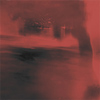 Former Slowdive drummer Simon Scott has been building up to releasing his debut solo album for quite some time and his meticulousness and deliberation were decidedly not in vain. Despite Scott's percussionist roots, Navigare is a glacial and often beatless dose of soft-focus sonic heroin that seamlessly integrates his shoegazer past with recent inspiration from ambient experimentalists like Fennesz and Tim Hecker.
Former Slowdive drummer Simon Scott has been building up to releasing his debut solo album for quite some time and his meticulousness and deliberation were decidedly not in vain. Despite Scott's percussionist roots, Navigare is a glacial and often beatless dose of soft-focus sonic heroin that seamlessly integrates his shoegazer past with recent inspiration from ambient experimentalists like Fennesz and Tim Hecker.
Since leaving Slowdive in the early ‘90s, Simon Scott has been a fairly busy fellow: he has founded a record label (Kesh Recordings), collaborated with folks like Machinefabriek and Jasper TX, and been a member of two other bands (Seavault and Televise). Nevertheless, he basically fell off my cultural radar and I almost slept on Navigare as a result, as I basically only remembered him as a guy who played drums very slowly (but well) in a band I liked more than a decade ago. Upon hearing this, however, it seems that either his talents were grossly underutilized in Slowdive or Simon has undergone a stunning creative evolution over the last decade and a half. Most likely, the truth lies somewhere between the two.
While it is certainly difficult to completely pin down Miasmah’s aesthetic, Navigare is nevertheless a bit of an aberration from the spectral neo-classicicism with which the label is generally associated. Scott is certainly akin to many of his label mates in cultivating a haunted and shadowy atmosphere, but is unique in both the considerable density of his work and the incorporation of heavier, more “rock” influences. The most successful and obvious example of the latter is “The ACC,” which artfully melds hazy shoegazer guitars with a bass-heavy dub influence and murky repeating loop that reminds me strongly of some of Scorn’s better work. “Flood Inn” also mines quite similar territory, but shifts the emphasis from the rhythm section to the crackling, amorphous haze that surrounds it.
Simon employs a wide arsenal of instrumentation on this album that includes sitars, flutes, and strings, but it is all so warped and heavily processed (in a good way) that it is quite difficult to identify them. Of course, when a recognizable sound does surface from the billowing fog of warmth and hiss, it can be quite striking (such as the melancholy cello loop that eventually emerges in “Under Crumbling Skies”). Much more obvious is his fascination with warped field recordings, ruined and degraded loops, and tape hiss (though Scott himself sees Navigare as a “guitar album” in the Kevin Shields/Christian Fennesz sense). The shimmering, roiling ambiance of “Spring Stars” makes an excellent case for his treated guitar prowess, but his wider masteries of mood, sound-shaping, and layering are what truly make the album memorable.
The overall tone of the album is decidedly one of enveloping, drugged warmth mingled with a ubiquitous lurking disquiet. One of the conscious objectives for Navigare was to seem simultaneously fluid and scorched, a daunting feat that was largely accomplished (though some individual tracks occasionally plunge too strongly into dissonance or bleakness to maintain the delicate balance). Despite those very narrow aesthetic confines, Scott has achieved an impressive degree of variety and emotional depth, making Navigare a very strong and self-assured first album.
Samples:
Read More
- Administrator
- Albums and Singles
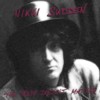 Completed shortly before his untimely passing earlier this year, Nikki Sudden's last album is also one of his strongest. While his songwriting and lyrics are as tight as ever, the backing musicians play as if the songs are their own and lend them a distinctive urgency. Sudden will be sorely missed and this album, with its bittersweet mix of melancholy and exuberance, proves why.
Completed shortly before his untimely passing earlier this year, Nikki Sudden's last album is also one of his strongest. While his songwriting and lyrics are as tight as ever, the backing musicians play as if the songs are their own and lend them a distinctive urgency. Sudden will be sorely missed and this album, with its bittersweet mix of melancholy and exuberance, proves why.
Sudden remains faithful to his glam and blues rock influences, styles he's perfected over the years. The blistering opener "Seven Miles" sets the tone for this album with its searing dual guitars and buoyant rhythm section. "Don't Break My Soul" continues the momentum before things get a little slower and a little darker on "The Ballad of Johnny and Marianne" and "Talking to the Wrong Guy." He's never complacent, either, injecting an unexpected moment of bliss on the otherwise rocking "Empire Blues." "Green Shield Stamps" finds him reminiscing about his youth, mentioning friends he hadn't seen since those days, his profound discovery of T-Rex, and the bands formed by him and his brother Epic Soundtracks. While Sudden may have strayed a bit with maturity from the anarchic impulses of his time in the Swell Maps, "Black Tar" isn't too far from that sound with its loud, heavy distortion. Yet the closer, "All This Buttoning and Unbuttoning," is a contemplative instrumental with Sudden on piano, highlighting the range of his songwriting abilities.
Sudden also handled the production duties on this album, augmenting tracks with keyboards and complementary backing vocals in all the right places to round out the compositions and give them proper depth and warmth. The songs themselves, with their faded angels, unfulfilled promises, and haunted loves, showcase Sudden's strengths and versatility to the very end.
samples:
Read More
- Administrator
- Albums and Singles
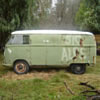 This set of superficially disassembled songs has its roots solidly planted in structured rock genres, but the production lifts it into a gorgeous leftfield. The fake brown paper bag artwork and the abandoned camper van on the cover give the album a discarded look, which is partially true. This lost 2005 debut from San Francisco's Sic Alps (in their trio incarnation) has been thankfully pulled from limbo and abandoned in plain view for the world’s listening pleasure.
This set of superficially disassembled songs has its roots solidly planted in structured rock genres, but the production lifts it into a gorgeous leftfield. The fake brown paper bag artwork and the abandoned camper van on the cover give the album a discarded look, which is partially true. This lost 2005 debut from San Francisco's Sic Alps (in their trio incarnation) has been thankfully pulled from limbo and abandoned in plain view for the world’s listening pleasure.
Swimming through thick and thin psychedelic atmospheres, these songs come to the fore of the record like rediscovered field hollers and wan white-boy blues. The majority of these twelve tracks come in too short, eagerly grabbing attention and then leaving too soon. These cooling furnace blasts of fuzzed distant verse and chorus music are buried way back in spluttering drums and wrenched warped guitar. Rooted in simple song configurations, the production keeps the bare bones afloat in wobbling hissy waves and scalped psychedelic guitar drones.
The opening "Battle of Breton Woods" is a cavernous Jandekian sounding minute long intro, bashed and trashed guitar leaking all over the place. Some of the music here skims the looser edges of NY noise rock, the best example of which is "Surgeon and the Slave" with its paint-flaying notes and mumbled vocals. The wind tunnel vocals of "Reconnection Land"s lethargic stomp open up the higher frequency channels for some Mary Chain buzz-pop white-out. There’s evidence of a lighter touch too in songs like "I Know Where Madness Goes", the fumblingly distant acoustic guitar and abandoned vocals summoning up broken hearts and strings. The simplicity of the vocal and piano (and hiss) cut "I am Grass" opens up a path for Sic Alps to sign up for some weird folk action in the future.
Not being aware of where they are now, this is a good place for a beginner like me to jump aboard the Sic Alps train. Time to hunt down the rest.
samples:
 
Read More
- Matthew Amundsen
- Albums and Singles
 Liam Singer’s second album overflows with beautiful piano playing and the album’s tone is frequently gorgeous, but he doesn’t do much new with his classical style and his efforts have little overall effect. The album works best as dinner music, albeit the type that’s forgotten as soon as the meal is digested.
Liam Singer’s second album overflows with beautiful piano playing and the album’s tone is frequently gorgeous, but he doesn’t do much new with his classical style and his efforts have little overall effect. The album works best as dinner music, albeit the type that’s forgotten as soon as the meal is digested.
Most of the instrumentals would work as the soundtrack to some melancholy film, but they aren’t differentiated enough on their own to be particularly engaging or memorable. "The Hero, the Cube, and the Flower" as well as "Left Ventricle/Tone Clusters" are nice, but take so much from the Philip Glass playbook that all they need is some chanting in Hopi to make them complete. While earnest, Singer’s voice is a little too precious and naïve for my taste and becomes annoying after a while. He has guest operatic vocals on three travelogues spread throughout the disc, the latter of which is my favorite, but there’s not enough of an implied narrative to make these as worthwhile as they could be.
Although abounding in talent, this album lacks the drama implied by the title and the secret, whatever it may be, lies forever in its watery grave.
Read More
- Matthew Amundsen
- Albums and Singles
 This improvisatory freakout featuring Nels Cline and Zach Hill was recorded in one day in Chicago. The four long tracks comprising this album consist of drums, electronics, and guitar in fairly equal doses. As cathartic as it may have been to perform, some of its intent gets lost in the recording.
This improvisatory freakout featuring Nels Cline and Zach Hill was recorded in one day in Chicago. The four long tracks comprising this album consist of drums, electronics, and guitar in fairly equal doses. As cathartic as it may have been to perform, some of its intent gets lost in the recording.
These songs get pretty abstract, as can be expected with improvised music, but they’re really more effective when the group heads in the same direction. Carla Bozulich had a hand in editing these tracks in post-production, but for the most part the edits seem arbitrary because each song’s elements are so similar, particularly on the first two, "Enduring Freedom" and "Fork-Fed." The most engaging and enjoyable song is also the album’s longest, "Deathwatch on the American Empire," which builds to a fairly straight but heavy finale. The electronics, while always present, take the foreground on "Space Needle," which is nice change.
While each of the tracks has some decent moments, sometimes the album seems to prefer chaos for its own sake. That’s not necessarily a bad achievement in itself, but it doesn’t always make for a compelling recording.
Read More
- Administrator
- Albums and Singles
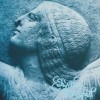 Most of Edward Ka-Spel's mid-'80s China Doll albums have beenunavailable for many years. The songs themselves have appeared onvarious compilations, but sometimes in a modified form, rarely with theoriginal track listings, and never with the original artwork. Anal-retentive fans have been drumming their fingers patiently,waiting, waiting...
Most of Edward Ka-Spel's mid-'80s China Doll albums have beenunavailable for many years. The songs themselves have appeared onvarious compilations, but sometimes in a modified form, rarely with theoriginal track listings, and never with the original artwork. Anal-retentive fans have been drumming their fingers patiently,waiting, waiting...Beta-Lactam Ring
With Laugh China Doll, Beta-lactam Ring Records has begun thewelcome process of re-releasing these works in their originalform. As an added bonus—or annoyance, depending on your pointof view—the coupons included with the albums can be redeemed for adisk of previously unreleased music (be careful when you pull the CDout of the cool "mini vinyl" gatefold sleeve; the coupon is small andeasily lost).
Due to the liquification of the original master tapes, Laugh China Doll (and the included Dance China Dollmaxi-single) could not be properly remastered. But thanks tometiculous clean-vinyl restoration the sound quality is incredible andthe album has never sounded as dynamic (though there are occasionalpops, cracks and moments of slight distortion). As for the songsthemselves, the majority of them are classics. Some do sufferfrom dated, repetitive, and frankly annoying drum programming ("Lisa'sFuneral," "Eye Contact") or fail to come together in a coherent way("Find the Lady"), but the bulk of the album covers Ka-Spel's strongpoints: the haunting melodies of "Requiem" and "Lady Sunshine," theepic war story "Atomic Roses," and "Lilith's Daughter," a voodoo taleof easy sex told through a traumatized child's eyes. Thehighpoint for me is "Even Now," a duet with the mysterious Lily AK, andit remains a perfect example of Ka-Spel at his most effective: just asimple keyboard line and some heartbreaking lyrics. Two livetracks from 1988 are also included, just so you'll know what it soundslike when a guy with a hammer bashes the heck out of a concrete block.
Laugh China Doll is a unique slice of early-'80s budgetelectronics. The keyboards may be creaky and the effects a littlecheesy, but it starts off the China Doll series with a bang, and itmeets my single criteria for aural goodness: "I like how it sounds."
samples:
Read More


